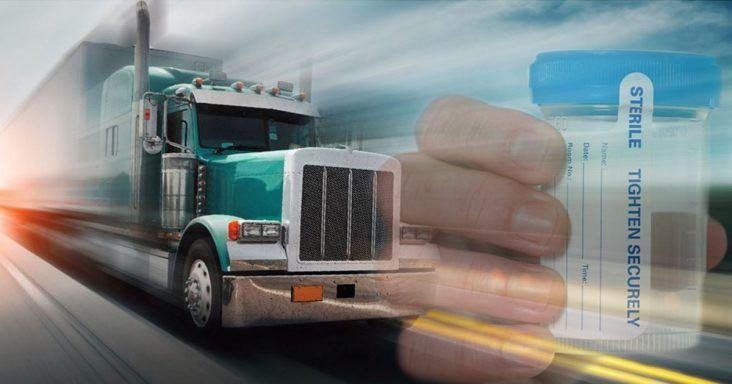Carriers, prospective drivers must register to use Drug & Alcohol Clearinghouse
by October 30, 2019 2:24 pm 699 views

Carriers soon will begin using the Commercial Driver’s License Drug and Alcohol Clearinghouse to determine whether existing or prospective drivers have drug or alcohol violations.
The Federal Register posted the final rule on the clearinghouse in December 2016, and it will go into effect Jan. 6, 2020. Earlier this month, the Federal Motor Carrier Safety Administration (FMCSA) started to allow carriers and drivers to register for the clearinghouse.
The clearinghouse is a database of the FMCSA that will maintain records of all drug and alcohol violations of the agency’s drug and alcohol testing program for those with commercial driver’s licenses. Carriers will be required to access the database to determine if prospective or existing drivers have a violation that would restrict them from driving.
In a recent webinar, Dave Osiecki, president of Scopelitis Transportation Consulting, discussed what carriers and drivers should know before the clearinghouse goes into effect.
Osiecki explained when the clearinghouse opens Jan. 6, it will not contain any information because past violations won’t be included in the system — only violations from the day it starts and afterward. Only the FMCSA and employers will be able to use the system; however, employers can designate a service agent to use it on their behalf, he said. They will input into the system information about when a driver has a drug or alcohol violation and can access this information from the system. Law enforcement can only see information on whether a driver is eligible to drive. Also, drivers can access their own information.
Drug and alcohol test violations of the U.S. Department of Transportation and the FMCSA must be uploaded into the system. Violations reported to the clearinghouse include an alcohol test showing at least a .04 blood/alcohol content, refusal to submit to a drug or alcohol test, actual knowledge of illicit drug or alcohol use while on duty and a negative return-to-duty test. Osiecki said driving while intoxicated charges related to driving one’s personal vehicle will not be reported to the system. Those who have actual knowledge of a driver using illicit drugs or alcohol while on duty must provide evidence with the report, he said.
Employers who hire drivers must register for the clearinghouse. Also, owner-operators must register along with drivers who are seeking employment with another company. However, drivers who remain with their existing employer won’t have to register, unless they have a drug or alcohol violation. Employers looking to hire a driver must do a full query of the driver. A full query shows a driver’s driving record and return-to-duty status. The data is available for at least five years, depending on when the requirements are met for return-to-duty status. The driver must log into the system and provide consent to allow for a full query.
Along with completing a full query, employers must ask the driver’s previous employer for driving history records through Jan. 6, 2023. Employers also must maintain these records until this date. Afterward, the clearinghouse will be the sole source for driving history records.
Annually, carriers must perform a limited query on all of their drivers even though no data might be available on the driver, Osiecki said. A limited query only shows if information on the driver is in the clearinghouse. If it has information on the driver, a full query must be completed within 24 hours.
Osiecki said that a carrier’s annual check of their drivers will show whether they are job shopping. Carriers will be notified if new data has been added to the system within 30 days of completing a full query. To complete a query, carriers need the driver’s name, date of birth, commercial driver’s license number and the state providing the driver’s license. The Commercial Driver’s License Information System verifies a driver’s information.
Limited queries are completed instantly. Employers are notified via email when information is available for a full query. Employers must put money on their account to pay for queries. Each query costs $1.25, and money is withdrawn from an employer’s account when the query is made. Employers can pay $24,500 annually for unlimited queries. Employers should be able to add money to their accounts sometime in November, Osiecki said.
In a question-and-answer session, Osiecki said that drivers who refuse consent to a full query or don’t allow their employer to do a limited query cannot be used as a driver for that company. He also said that the clearinghouse will likely be empty for months to years.
Registrations into the system are active for five years, and the FMCSA will cancel registrations that are inactive for two years. Volpe Transportation Systems Center, an agency of the U.S. Department of Transportation, built the clearinghouse.
Analysts have previously said that they expect capacity to constrict in the trucking industry as a result of the clearinghouse. In a recent note on the proposed changes to hours-of-service regulations, analysts Jack Atkins and Scott Schoenhaus, both of Little Rock-based Stephens Inc., expected the start of the clearinghouse along with the final conversion from automatic on-board recording devices to electronic logging devices (ELDs) to more than offset the capacity that is expected to be added in the industry as a result of the proposed hours-of-service rule changes. Along with reducing capacity next year, the clearinghouse also is expected to lead to increased turnover in the industry, Atkins and Schoenhaus said.
Link here to access the clearinghouse.
